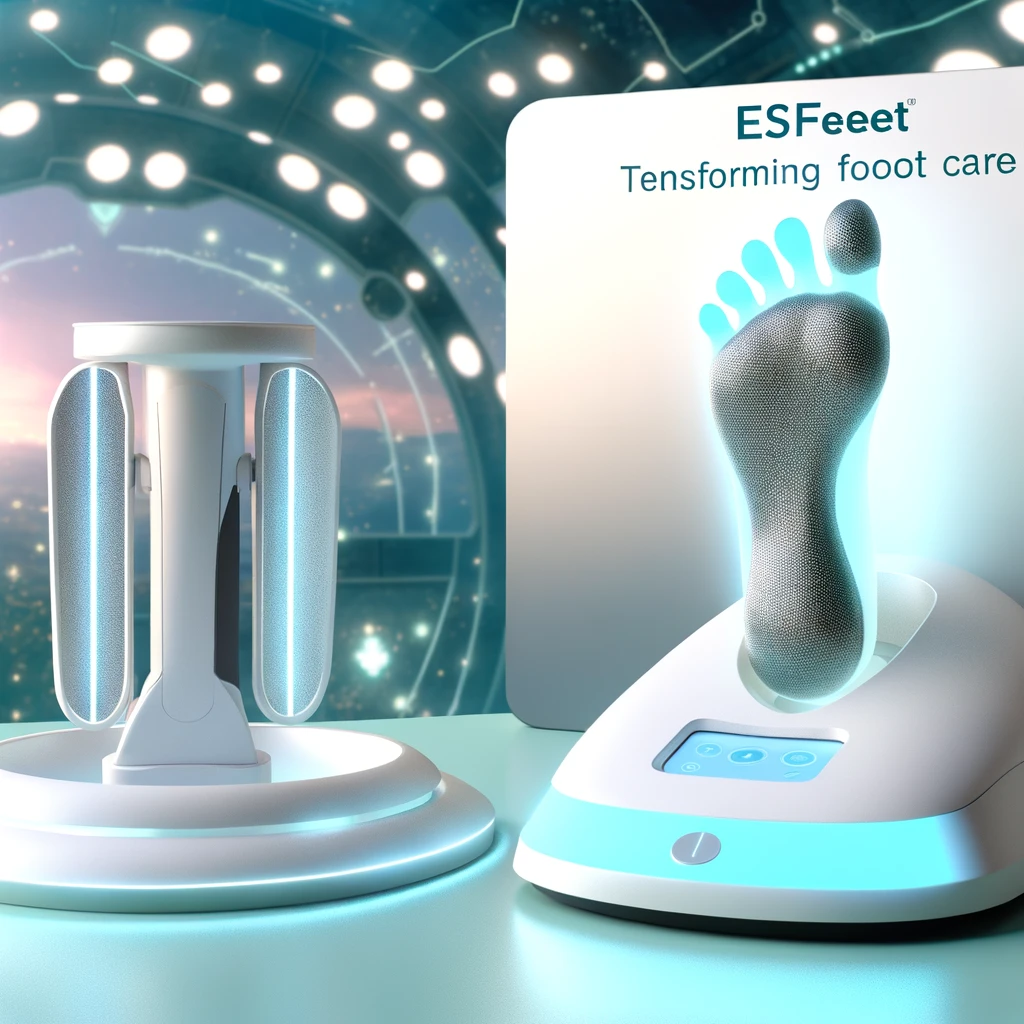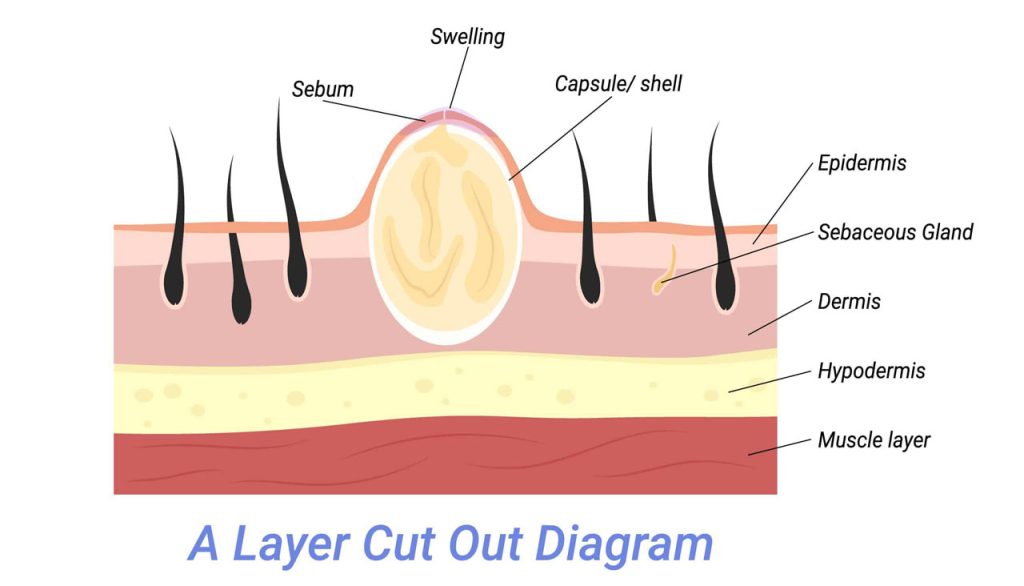Health
Glycolysis and Gluconeogenesis: Understanding the Biochemical Pathways

As proficient SEO and high-end copywriters, we know that writing content that can outrank other websites requires a thorough understanding of the subject matter, as well as the ability to communicate complex information in a clear and concise manner. In this article, we will explore the biochemical pathways of glycolysis and gluconeogenesis, and provide a comprehensive overview of the two processes that are crucial to the regulation of blood glucose levels.
Glycolysis and Gluconeogenesis
If you want to know what Glycolysis and Gluconeogenesis are? Be Ready!
Below is a complete overview of the tow biochemical pathways i.e; Glycolysis and Gluconeogenesis.
What is Glycolysis?

Glycolysis is the metabolic process that breaks down glucose into pyruvate, producing ATP in the process. The process takes place in the cytoplasm of cells and is an important energy source for most organisms. The process can be broken down into two stages: the preparatory phase and the energy-yielding phase.
The Preparatory Phase: During the preparatory phase, glucose is converted into fructose-1,6-bisphosphate. This process requires ATP, and is catalyzed by the enzyme hexokinase. The fructose-1,6-bisphosphate is then split into two three-carbon molecules, glyceraldehyde-3-phosphate and dihydroxyacetone phosphate.
The Energy-Yielding Phase: During the energy-yielding phase, glyceraldehyde-3-phosphate and dihydroxyacetone phosphate are converted into pyruvate. This process results in the production of ATP and NADH, which can be used for cellular processes.
What is Gluconeogenesis?
Gluconeogenesis is the process by which glucose is synthesized from non-carbohydrate sources, such as amino acids and fatty acids. The process occurs in the liver and kidneys, and is critical for maintaining blood glucose levels during times of fasting or prolonged exercise. The process can be broken down into three stages: the formation of oxaloacetate, the conversion of oxaloacetate to phosphoenolpyruvate, and the conversion of phosphoenolpyruvate to glucose.

The Formation of Oxaloacetate: The first stage of gluconeogenesis involves the conversion of pyruvate into oxaloacetate. This process is catalyzed by the enzyme pyruvate carboxylase and requires ATP. The oxaloacetate is then converted into phosphoenolpyruvate, which is an intermediate in the process of glycolysis.
The Conversion of Oxaloacetate to Phosphoenolpyruvate: During the second stage of gluconeogenesis, oxaloacetate is converted into phosphoenolpyruvate. This process requires the enzyme phosphoenolpyruvate carboxykinase and requires the input of energy in the form of GTP.
The Conversion of Phosphoenolpyruvate to Glucose: The final stage of gluconeogenesis involves the conversion of phosphoenolpyruvate to glucose. This process requires the enzyme glucose-6-phosphatase, and occurs in the liver and kidneys. The glucose can then be released into the bloodstream, where it can be used by other tissues for energy.
Regulation of Glycolysis and Gluconeogenesis: The regulation of glycolysis and gluconeogenesis is tightly controlled, and is primarily achieved through the regulation of key enzymes in the two pathways. For example, the enzyme phosphofructokinase is a key regulatory enzyme in glycolysis, and is allosterically inhibited by ATP and stimulated by ADP. In contrast, the enzyme fructose-1,6-bisphosphatase is a key regulatory enzyme in gluconeogenesis, and is inhibited by AMP and activated by citrate.
Health Benefits of Glycolysis and Gluconeogenesis
Glycolysis and gluconeogenesis are two vital metabolic pathways that are essential for the proper functioning of the human body. Both these pathways have unique functions that are critical for maintaining a healthy body. In this article, we will explore the health benefits of glycolysis and gluconeogenesis.
Glycolysis is the metabolic pathway that breaks down glucose into pyruvate, which is then used to produce energy in the form of ATP. This process occurs in the cytoplasm of cells and is the primary source of energy for most cells in the human body. Glycolysis is a critical process that provides the body with the energy it needs to function correctly. When glucose is metabolized, it also produces a compound called NADH, which is necessary for the production of ATP. The NADH produced during glycolysis is later used in the electron transport chain to produce even more ATP.

Glycolysis is not only important for energy production but also has other health benefits. For instance, the process of glycolysis plays a crucial role in the immune response of the body. Immune cells, such as T cells and B cells, require large amounts of energy to carry out their functions, such as cell proliferation and cytokine production. Glycolysis provides the energy that immune cells need to function correctly and fight off infections.
Another health benefit of glycolysis is its role in reducing oxidative stress. When cells undergo oxidative stress, reactive oxygen species (ROS) are produced, which can damage the cells and lead to various diseases. Glycolysis helps reduce oxidative stress by producing NADPH, which is an antioxidant that protects cells from ROS damage. This is especially important for cells that are exposed to high levels of oxidative stress, such as red blood cells and neurons.
Gluconeogenesis, on the other hand, is the metabolic pathway that produces glucose from non-carbohydrate sources, such as amino acids and fatty acids. This process occurs primarily in the liver and kidneys and is essential for maintaining blood glucose levels. When blood glucose levels drop, the body can use gluconeogenesis to produce glucose and prevent hypoglycemia.
The health benefits of glycolysis and gluconeogenesis are significant. For instance, gluconeogenesis is crucial for maintaining the health of the brain. The brain relies heavily on glucose as a source of energy, and when glucose levels drop, the brain can suffer from energy deprivation. Gluconeogenesis provides an alternative source of glucose for the brain when glucose levels are low, which helps prevent brain damage and maintain cognitive function.
Another health benefit of gluconeogenesis is its role in preventing muscle wasting. When the body is in a state of starvation or fasting, it can use gluconeogenesis to produce glucose and prevent muscle breakdown. Gluconeogenesis allows the body to use non-carbohydrate sources to produce glucose, which spares the breakdown of muscle tissue for energy.
Conclusion
In conclusion, glycolysis and gluconeogenesis are critical metabolic pathways that provide many health benefits to the human body. Glycolysis provides the body with energy, helps the immune system function correctly, and reduces oxidative stress. Gluconeogenesis helps maintain blood glucose levels, supports brain function, and prevents muscle wasting. By understanding the importance of these metabolic pathways, we can take steps to maintain our health and prevent disease.

Health
Unlocking the Power of Kecveto: A Comprehensive Guide

In the vast landscape of health and wellness, there’s a buzzword that’s been gaining traction: Kecveto. But what exactly is Kecveto, and why is it garnering so much attention? In this comprehensive guide, we’ll delve deep into the world of Kecveto, exploring its origins, benefits, and how you can incorporate it into your life for optimal well-being.
What is Kecveto?
Kecveto is a term that encompasses a holistic approach to health and wellness, focusing on the interconnectedness of mind, body, and spirit. It draws inspiration from ancient healing traditions and modern science to promote balance and harmony within the individual.
Origins of Kecveto

The roots of Kecveto can be traced back to ancient civilizations such as Ayurveda, Traditional Chinese Medicine, and Indigenous healing practices. These traditions recognized the importance of addressing the underlying causes of illness rather than just treating symptoms. Kecveto builds upon this foundation, integrating ancient wisdom with contemporary knowledge to create a comprehensive approach to well-being.
Key Principles of Kecveto
At the core of Kecveto are several key principles that guide its philosophy and practice:
- Holistic Approach:
- Kecveto views the individual as a whole, acknowledging the interconnectedness of physical, emotional, and spiritual aspects of health.
- Preventive Care:
- Rather than waiting for illness to occur, Kecveto emphasizes proactive measures to prevent disease and promote longevity.
- Mind-Body Connection:
- Kecveto recognizes the profound influence of thoughts, emotions, and beliefs on physical health, advocating for practices that cultivate mental and emotional well-being.
- Natural Healing:
- Kecveto prioritizes natural remedies and therapies, drawing upon the healing properties of plants, herbs, and other natural substances.
- Personalized Approach:
- Recognizing that each individual is unique, Kecveto emphasizes personalized care tailored to the specific needs and preferences of the individual.
Benefits of Kecveto
The practice of Kecveto offers a wide range of benefits for both physical and mental health:
- Improved Immune Function:
- By supporting the body’s natural defense mechanisms, Kecveto can help strengthen the immune system and reduce the risk of illness.
- Enhanced Energy and Vitality:
- Kecveto practices such as nutrition, exercise, and stress management can boost energy levels and promote overall vitality.
- Reduced Stress and Anxiety:
- Mindfulness, meditation, and other Kecveto techniques can help calm the mind, reduce stress, and alleviate symptoms of anxiety and depression.
- Better Digestive Health:
- Through a focus on whole foods and digestive support, Kecveto can improve digestion and promote gut health.
- Balanced Hormones:
- Kecveto approaches to nutrition and lifestyle can help balance hormones and support reproductive health.
Incorporating Kecveto into Your Life
Now that we understand the principles and benefits of Kecveto, let’s explore how you can integrate this approach into your daily life:

- Nutrition:
- Adopt a whole-foods-based diet rich in fruits, vegetables, lean proteins, and healthy fats. Avoid processed foods, excessive sugar, and artificial additives.
- Exercise:
- Incorporate regular physical activity into your routine, choosing activities that you enjoy and that align with your fitness level and goals.
- Stress Management:
- Practice mindfulness, meditation, deep breathing, or other stress-reduction techniques to cultivate a sense of calm and relaxation.
- Sleep:
- Prioritize quality sleep by establishing a consistent bedtime routine, creating a restful sleep environment, and practicing good sleep hygiene habits.
- Social Connection:
- Foster meaningful connections with friends, family, and community, recognizing the importance of social support for overall well-being.
- Self-Care:
- Make time for activities that nourish your body, mind, and spirit, whether it’s taking a warm bath, reading a good book, or spending time in nature.
- YOU MAY ALSO LIKE: Unlocking the Mystery of Milialar: A Comprehensive Guide
Conclusion
Kecveto offers a holistic approach to health and wellness, integrating ancient wisdom with modern science to promote balance and vitality. By embracing the key principles of Kecveto and incorporating them into your daily life, you can enhance your physical, mental, and emotional well-being for a happier, healthier life. So why wait? Start your Kecveto journey today and unlock the power of holistic health and wellness.
FAQ,S
- What does Kecveto mean?
- Kecveto is a holistic approach to health and wellness that emphasizes the interconnectedness of mind, body, and spirit. It draws inspiration from ancient healing traditions and modern science to promote balance and harmony within the individual.
- How can I incorporate Kecveto into my daily life?
- You can incorporate Kecveto into your daily life by adopting practices such as nutrition, exercise, stress management, mindfulness, and self-care. This may involve eating a whole-foods-based diet, engaging in regular physical activity, practicing meditation or deep breathing exercises, prioritizing quality sleep, and fostering meaningful social connections.
- What are the benefits of practicing Kecveto?
- Practicing Kecveto offers numerous benefits for both physical and mental health, including improved immune function, enhanced energy and vitality, reduced stress and anxiety, better digestive health, and balanced hormones. By addressing the holistic needs of the individual, Kecveto promotes overall well-being and longevity.
- Is Kecveto suitable for everyone?
- While Kecveto principles can benefit people of all ages and backgrounds, it’s important to recognize that individual needs and preferences may vary. It’s always a good idea to consult with a healthcare professional or holistic practitioner to determine the best approach for your specific circumstances.
- Are there any specific practices or techniques associated with Kecveto?
- Yes, there are several practices and techniques commonly associated with Kecveto, including mindfulness meditation, yoga, herbal medicine, acupuncture, aromatherapy, and energy healing modalities such as Reiki. These practices aim to promote balance and harmony within the individual, supporting overall health and well-being.
Health
Everything You Need to Know About ESFEET: An Essential Guide

Introduction:
ESFEET is a term gaining traction in various health and wellness circles, particularly among those interested in foot care and comfort. But what exactly does ESFEET mean, and why is it important? In this comprehensive guide, we’ll delve into the world of ESFEET, exploring its definition, significance, and practical implications for everyday life.

What is ESFEET?
ESFEET is an abbreviation derived from the phrase “essential feet.” It encompasses the fundamental principles of foot health and well-being, emphasizing the importance of proper care and attention to ensure overall comfort and functionality.
The Significance of ESFEET:
Proper foot care is essential for maintaining overall health and mobility. Here’s why ESFEET matters:
- Foundation of Mobility:
- Your feet serve as the foundation for your entire body, supporting your weight and facilitating movement. Neglecting foot health can lead to discomfort, pain, and mobility issues.
- Impact on Daily Activities:
- Healthy feet are crucial for performing daily activities comfortably and efficiently. Whether walking, standing, or engaging in physical exercise, well-maintained feet enhance your overall quality of life.
- Preventative Measure:
- Prioritizing ESFEET can help prevent various foot ailments and conditions, such as bunions, corns, calluses, and ingrown toenails. By adopting proper foot care practices, you can minimize the risk of experiencing these discomforts.
- Overall Well-Being:
- Foot health is closely linked to overall well-being. By nurturing your feet through ESFEET principles, you promote better circulation, posture, and balance, contributing to your holistic health.
Practical Tips for ESFEET:

Incorporating ESFEET practices into your daily routine can significantly improve foot health and comfort. Here are some practical tips to help you prioritize ESFEET:
- Proper Footwear:
- Choose footwear that provides adequate support, cushioning, and room for your toes. Avoid shoes that are too tight or narrow, as they can cause discomfort and restrict circulation.
- Regular Foot Hygiene:
- Practice good foot hygiene by washing your feet daily with soap and water. Dry them thoroughly, especially between the toes, to prevent fungal infections.
- Moisturize:
- Keep your feet moisturized to prevent dryness and cracking. Use a hydrating foot cream or lotion, paying attention to areas prone to dryness, such as the heels and soles.
- Trim Nails Carefully:
- Trim your toenails straight across to avoid ingrown toenails. Use proper nail clippers and avoid cutting them too short, as this can increase the risk of ingrown nails.
- Foot Exercises:
- Incorporate foot exercises into your routine to strengthen the muscles and improve flexibility. Simple exercises like toe curls, ankle rotations, and calf stretches can help maintain foot health.
- Regular Check-ups:
- Schedule regular check-ups with a podiatrist or foot specialist to assess your foot health and address any concerns or issues promptly.

Conclusion:
ESFEET encompasses the fundamental principles of foot health and well-being, emphasizing the importance of proper care and attention. By prioritizing ESFEET practices in your daily routine, you can enhance foot comfort, mobility, and overall quality of life. Remember to choose appropriate footwear, practice good foot hygiene, moisturize regularly, trim nails carefully, perform foot exercises, and schedule regular check-ups to maintain optimal foot health. With ESFEET as your guiding principle, you can step forward with confidence and comfort in every stride.
YOU MAY ALSO LIKE. Unlocking the Mystery of Milialar: A Comprehensive Guide
FAQ,S
1. What does ESFEET stand for?
- ESFEET is an abbreviation derived from the phrase “essential feet.” It encompasses the fundamental principles of foot health and well-being, emphasizing the importance of proper care and attention to ensure overall comfort and functionality.
2. Why is ESFEET important?
- ESFEET is important for several reasons. Firstly, proper foot care is essential for maintaining overall health and mobility. Your feet serve as the foundation for your entire body, supporting your weight and facilitating movement. Neglecting foot health can lead to discomfort, pain, and mobility issues. Additionally, prioritizing ESFEET can help prevent various foot ailments and conditions, such as bunions, corns, calluses, and ingrown toenails. By adopting proper foot care practices, you can minimize the risk of experiencing these discomforts and promote better circulation, posture, and balance, contributing to your holistic health.
3. How can I prioritize ESFEET in my daily routine?
- You can prioritize ESFEET in your daily routine by incorporating simple yet effective practices. Start by choosing proper footwear that provides adequate support, cushioning, and room for your toes. Practice good foot hygiene by washing your feet daily with soap and water and drying them thoroughly, especially between the toes. Keep your feet moisturized to prevent dryness and cracking, trim your toenails carefully, perform foot exercises to strengthen muscles and improve flexibility, and schedule regular check-ups with a podiatrist or foot specialist to assess your foot health and address any concerns promptly.
4. What are some common foot ailments that ESFEET practices can help prevent?
- ESFEET practices can help prevent various foot ailments and conditions, including bunions, corns, calluses, and ingrown toenails. By choosing proper footwear, practicing good foot hygiene, moisturizing regularly, trimming nails carefully, performing foot exercises, and scheduling regular check-ups, you can minimize the risk of experiencing these discomforts and maintain optimal foot health.
5. How can I find the right footwear to prioritize ESFEET?
- Finding the right footwear to prioritize ESFEET involves considering several factors. Look for shoes that provide adequate support, cushioning, and room for your toes. Avoid shoes that are too tight or narrow, as they can cause discomfort and restrict circulation. Consider your specific foot shape and any existing foot issues when selecting footwear. It may be helpful to consult with a shoe specialist or podiatrist to ensure you choose the most suitable shoes for your needs.
Health
Unlocking the Mystery of Milialar: A Comprehensive Guide

Are you curious about milialar? You’re not alone. This enigmatic term has piqued the interest of many, yet it remains shrouded in mystery for most. Fear not, as we embark on a journey to unravel the secrets of milialar together. In this comprehensive guide, we’ll delve deep into what milialar is, its significance, common misconceptions, and much more. By the end, you’ll have a clear understanding of this intriguing concept.

What is Milialar?
Milialar, often pronounced as “mee-lee-uh-lahr,” is a term that has gained traction in various fields, including technology, philosophy, and psychology. Despite its widespread use, its meaning is not always clear-cut. At its core, milialar refers to a state of profound interconnectedness and unity.
The Origins of Milialar
The term “milialar” traces its roots to ancient philosophical and spiritual teachings, where it was used to describe the interconnectedness of all things in the universe. It draws inspiration from concepts such as oneness, unity, and harmony.
Key Concepts of Milialar
To grasp the essence of milialar, it’s essential to understand some key concepts:
- Interconnectedness:
- Milialar emphasizes the interconnected nature of existence, highlighting how everything in the universe is intricately linked.
- Unity:
- At its core, milialar advocates for a sense of unity and oneness, transcending individual differences and boundaries.
- Harmony:
- Milialar promotes the idea of living in harmony with oneself, others, and the environment, fostering a sense of balance and peace.
The Significance of Milialar
Milialar holds profound significance in various aspects of life:
- Spirituality:
- Many spiritual traditions and teachings embrace the concept of milialar as a pathway to enlightenment and spiritual growth.
- Environmentalism:
- Milialar underscores the importance of preserving and protecting the natural world, recognizing our interconnectedness with all living beings.
- Social Dynamics:
- Understanding milialar can foster empathy, compassion, and cooperation, leading to more harmonious relationships and communities.
Common Misconceptions About Milialar
Despite its rich history and significance, milialar is often misunderstood. Here are some common misconceptions:
- New Age Nonsense:
- Some dismiss milialar as mere New Age philosophy without recognizing its deep roots in ancient wisdom traditions.
- Individualism vs. Collectivism:
- Critics argue that milialar promotes collectivism at the expense of individual autonomy, overlooking its emphasis on balance and harmony between the two.
- Idealistic Fantasy:
- Skeptics may view milialar as an idealistic fantasy disconnected from the realities of life, failing to appreciate its practical applications in everyday living.
Practical Applications of Milialar
Far from being a lofty philosophical concept, milialar has tangible applications in various areas:
- Personal Growth:
- Embracing milialar can lead to greater self-awareness, acceptance, and personal transformation.
- Conflict Resolution:
- By recognizing our interconnectedness, we can approach conflicts with empathy and understanding, seeking mutual resolutions.
- Environmental Stewardship:
- Milialar inspires environmental activism and sustainable living practices, recognizing the interconnectedness of all life forms.
Cultivating Milialar in Daily Life

Now that we understand the essence of milialar, how can we incorporate it into our daily lives? Here are some practical tips:
- Mindfulness Practices:
- Engage in mindfulness meditation, yoga, or other contemplative practices to cultivate awareness of interconnectedness.
- Acts of Kindness:
- Practice random acts of kindness towards others, recognizing that our actions have ripple effects beyond ourselves.
- Connect with Nature:
- Spend time in nature, appreciating the interconnected web of life and our place within it.
- Community Engagement:
- Get involved in community initiatives and social causes, fostering a sense of collective responsibility and solidarity.
Conclusion
Milialar offers a profound lens through which to view the world, emphasizing our interconnectedness and unity as a guiding principle for personal, social, and environmental well-being. By embracing milialar in our lives, we can cultivate greater harmony, empathy, and resilience in the face of life’s challenges. As we continue to explore the depths of milialar, let us remember that we are all connected, bound together by the intricate threads of existence.
You may also like: Unveiling the Wonders of Retroya: A Journey into Nostalgia and Innovation.
FAQ,S
1. What does milialar mean?
- Milialar refers to a state of profound interconnectedness and unity, emphasizing the interconnected nature of existence and the harmony between all things in the universe.
2. How can I apply the concept of milialar in my daily life?
- You can incorporate the concept of milialar into your daily life through practices such as mindfulness, acts of kindness, connecting with nature, and engaging with your community. These actions can help cultivate awareness of interconnectedness and foster a sense of unity and harmony.
3. Is milialar a purely philosophical concept, or does it have practical applications?
- While milialar has deep philosophical roots, it also has practical applications in various areas of life. It can be applied to personal growth, conflict resolution, environmental stewardship, and fostering harmonious relationships and communities.
4. Are there any misconceptions about milialar?
- Yes, there are common misconceptions about milialar, including viewing it as New Age nonsense, promoting collectivism over individualism, and being an idealistic fantasy disconnected from reality. However, these misconceptions overlook the rich history and practical significance of milialar.
5. What are some examples of milialar in action?
- Examples of milialar in action include practicing mindfulness, resolving conflicts with empathy and understanding, participating in environmental activism, and engaging in acts of kindness towards others. These actions reflect an understanding of interconnectedness and a commitment to fostering unity and harmony in the world.
-

 Apps6 months ago
Apps6 months agoHow to Send a Snap with the Cartoon Face Lens
-

 Entertainment1 year ago
Entertainment1 year agoUfreegames – The Ultimate Gaming Platform
-

 News1 year ago
News1 year agoNalco Q3 Profit Drops 69% YoY to Rs 256 Crore: An Analysis
-

 Business4 months ago
Business4 months agoDTF Printer: A Game-Changing Solution for Printing
-

 Entertainment6 months ago
Entertainment6 months agoDitto Pokemon Go: The Ultimate Guide to Catching this Shape-Shifting Pokemon
-

 Accessary11 months ago
Accessary11 months agoCorsair Void Pro RGB Wireless: The Ultimate Gaming Headset for Serious Gamers
-

 Business1 year ago
Business1 year agoIntroduction to EVE Marketer: A Guide to Thriving in the Virtual Economy
-

 Celebrity1 year ago
Celebrity1 year agoমিচিয়াকি তাকাহাশি – A Role Model for Success


